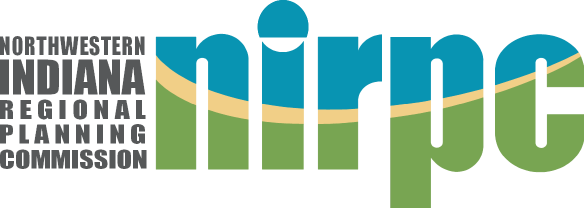A self-assessment tool for Indiana’s coastal watershed communities to evaluate vulnerability to natural hazards and increase resilience
The Northwestern Indiana Regional Planning Commission (NIRPC) was contracted by the Indiana Department of Natural Resources Lake Michigan Coastal Program (LMCP) to develop a coastal resiliency community self-assessment tool for Northwest Indiana coastal local government authorities (LGAs) and to support LGAs in completing the self-assessment. The Indiana Coastal Watershed Hazards Resiliency Needs Self-assessment is available as a fillable PDF or printable Word document, fillable pdf or printable copy
The self-assessment is intended to help LGA (municipal and county) staff and decision-makers of Indiana coastal watershed communities evaluate the potential impacts of natural hazards and consider planning and mitigation actions to increase resilience. It consists of two parts:
Part 1: Identifying Coastal Watershed Hazard Risks - This tool helps LGAs prioritize hazard issues (coastal flooding, riverine flooding, coastal erosion, fluvial erosion, lake level change, and coastal storms) in by rating their perceived probability, impact, and preparedness.
Part 2: Resilient Practices Questionnaire - A series of questions to help identify common planning and mitigation actions LGAs can implement to address coastal watershed hazard issues. Part 2 includes:
- Understanding Coastal Hazard Impacts
- Hazard Mitigation Planning
- Local Government Planning
- Local Ordinances
- Implementing Best Practices
- Public Education and Engagement
- Shoreline and Fluvial Erosion Protection
- Stormwater Management
- Natural Areas, Open Space, and Public Access
- Marinas
In addition to developing the self-assessment, NIRPC assisted and encouraged LGAs to complete the assessment. LGA representatives were contacted to arrange “listening sessions” to assist LGAs in completing the self-assessment, gather feedback, and answer questions about the tool.
NIRPC held one or more listening sessions with 27 of the 34 (79%) LGAs in Northwest Indiana’s coastal watershed. NIRPC received completed assessments from 20 of the 34 (59%) LGAs in the watershed. The following communities submitted assessments: Beverly Shores, Chesterton, Dune Acres, East Chicago, Gary, Griffith, Hammond, Highland, Hobart, Lake County, Merrillville, Michigan City, New Chicago, Ogden Dunes, Portage, Porter, Pottawatomie Park, Schererville, Valparaiso, and Whiting. Half of the respondents indicated that shoreline-specific issues were applicable to their community.
This summary report details NIRPC’s actions, results, and key findings. Recommendations and lessons learned are provided to help LMCP and partners identify areas in which they can help LGAs improve their natural hazards resiliency planning and capacity.
Indiana Coastal Watershed Hazards Resiliency: A Community Self-Assessment Tool - Summary Report
Key findings include:
- Most LGAs perceive low or moderate probability of riverine flooding, yet most also commented on flooding concerns and planning and actions to alleviate flooding.
- Many LGAs reported working closely with partners and agencies. such as the Little Calumet River Basin Development Commission (LCRBDC), FEMA, Army Corps of Engineers (ACOE), and County Surveyors.
- Most LGAs are aware of the potential risks of contamination of waterways due to coastal watershed hazards across all hazard issues with riverine flooding and fluvial erosion most pronounced.
- Responses indicated confusion regarding the Multi-Hazard Mitigation Planning process. Most respondents were unfamiliar with FEMA Hazard Mitigation Grants and the BRIC program.
- LGAs tend to indirectly address resiliency in their plans without explicitly addressing “community resilience” or “climate mitigation” in those terms.
- Self-reported top priorities for enhancing resiliency are shoreline protection, flood reduction, and a combination of nature-based and traditional infrastructure solutions.
- Staff completing the assessment were sometimes unaware of their LGA’s plans or their contents.
- Most LGAs participate in the National Flood Insurance Program but not the Community Rating System (CRS). Many LGAs are not familiar with the CRS.
- Most LGAs don’t regularly educate the public about natural hazards but are most likely to conduct outreach for riverine flooding.
- Roughly half of LGAs take projected precipitation increases into account in their stormwater management plans and manage infrastructure for future climate risks. Most lack flood management plans.
- Most LGAs have explored hybrid-structural or non-structural options for erosion control but lack the in-house knowledge and capacity to maintain these options.
- Many LGAs inventory open space but have not mapped beaches, dunes, riparian areas, and recreation uses. LGAs often use publicly available layers from IndianaMap and LMCP’s Indiana Coastal Atlas.
- Most LGAs lack a formal plan for managing access to public beaches and rivers during times of high lake levels or shoreline erosion, though many take actions that are not formally documented in a plan.

